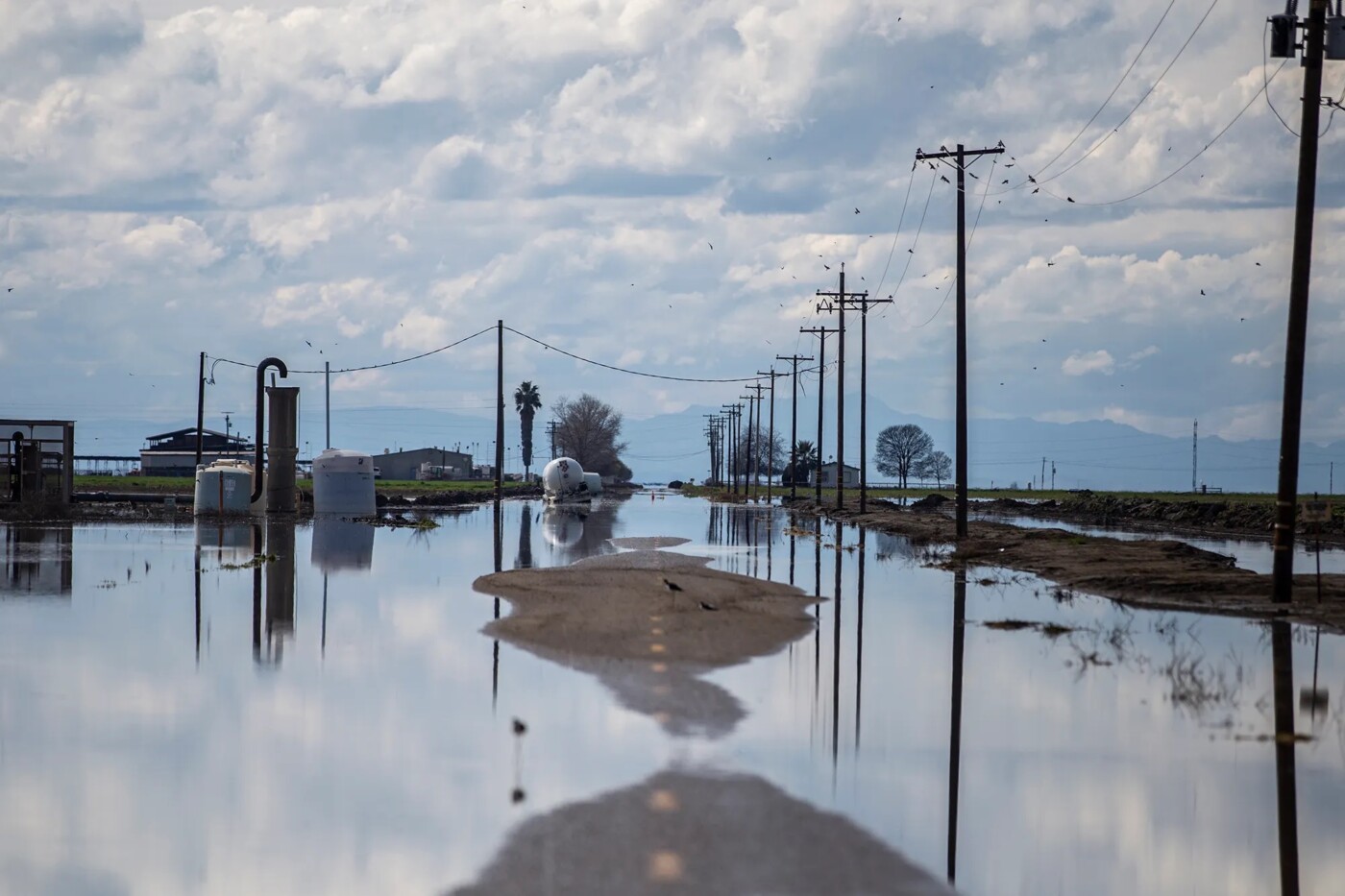Three years ago, Gov. Gavin Newsom sensed an opportunity as California emerged from the pandemic with record budget surpluses after a series of calamitous wildfires and drought years.
The governor set aside a bigger chunk of the surplus billions for two consecutive years to combat climate change — an issue close to the heart of many Democratic voters — and then, facing deficits, had to cut it back last year, to $52.3 billion.
But today, Newsom proposed scaling climate funding back by 7% compared to last year’s budget, to $48.3 billion, while spreading that money out over seven years, up from six last year. The cuts unveiled in the first draft of his new budget follow last year’s 3% cut to climate programs, and triggered criticism from environmental groups.
California programs to tackle and adapt to the changing climate include a vast array of programs, including subsidies for electric cars, funds for making the coast more resilient, programs to prepare for wildfires and secure water supplies, and efforts to build solar and wind projects.
Newsom’s proposal offers a look at how viable the state’s commitments to tackling climate change will be as the state’s historic surpluses turn to deficits. Newsom, in a budget presentation in Sacramento, detailed a preliminary budget meant to fill what his administration said was a huge, $37.9 billion projected statewide budget hole.
Newsom said some of the climate cuts would be buttressed by more than $10 billion in federal money from the Biden administration. He said his budget still included “unprecedented commitments on climate that actually will grow because of the support of the federal government.”
The governor’s proposal delayed $600 million in spending on zero emission cars and trucks by three years, including to the electric car rebate program, the Clean Cars 4 All program aimed at getting more lower-income Californians to purchase zero emissions cars. Also delayed by three years is money to build charging stations. An ambitious transition to electric cars is considered critical to meeting the state’s zero-carbon mandate to slash climate-warming greenhouse gases.
“These delays suggest a bumpy road ahead for an equitable ZEV transition amid a deficit,” Jamie Pew, climate policy advisor with the nonprofit group NextGen, wrote in an email to CalMatters.
The governor’s proposal is the first step in a months-long negotiation with the Legislature that will include his revised plan in May and a June 15 legislative deadline.
Climate groups criticized Newsoms proposal today, saying cutting back on state spending now would cost the state more down the line.
“We can’t backslide or slow down while the climate crisis speeds up. We need our state leadership to do more, not less,” said Mary Creasman, chief executive of California Environmental Voters in a statement.
“We look forward to working with the governor and Legislature to make 2024 a year of innovative and courageous climate leadership.”
Newsom’s proposal included $2.9 billion in climate program cuts, $1.9 billion in spending delays and $1.8 billion shifts in funding from spending general fund dollars to other sources of revenue.
Most of the shift will be made to the state’s Greenhouse Gas Reduction Fund, which is paid for by the controversial cap-and-trade carbon market, in which oil refineries, power plants and manufacturers pay for their excess carbon dioxide emissions. Last quarter’s auction brought in $1.4 billion.

The plan pauses spending on staff costs to implement two climate laws signed last year that required large corporations to disclose greenhouse gas emissions and financial risks from climate change. Newsom, when he signed the bills last year, said he might seek delays in their implementation.
Out of a $10 billion package to encourage adoption of zero emission cars and trucks, the governor proposed $38.1 million in cuts and replaced $475.3 million in general fund dollars with money from the greenhouse gas fund.
Last year, Newsom left funds for the transition to electric vehicles largely in place, though he made $910 million meant for zero emissions transit available to support public transit agencies.
This year’s proposal also would make some cuts and delays in clean energy, as well as wildfire and forest resilience, water recycling and other programs. The 2021 and 2022 budgets included $2.8 billion for forest and wildfire resilience; the new proposal maintains $2.7 billion of that over five years.
The state also secured another source of funding last year. The Legislature extended registration and other fees on state drivers last year to fund the state’s Clean Transportation Program, which is expected to provide about $1.2 billion for zero-emission infrastructure through 2035, including a controversial set aside for building fueling stations for hydrogen fuel cell vehicles.
Rachel Ehlers, a deputy legislative analyst covering environment and transportation, said one critical question will be how quickly programs are using the money they have received.
“How are we doing on getting that money out the door? On getting it in the hands of consumers looking to buy vehicles? To entities who are building the charging infrastructure?” she said. “And how quickly are we spending that money? … That’s going to be a key question.”
Many activists were bracing for what Newsom’s announcement might mean for the state’s ability to finance California’s clean energy transition.
“We’re disappointed in the proposed cuts to the state’s clean car, truck and bus programs and to rooftop solar power and storage incentives, especially as rooftop solar installations stall,” Environment California State Director Laura Deehan said in a statement. “Clean energy and climate programs are investments we make for our kids and grandkids. If we cut now, they pay more later in health, and in their environment as well as money.
